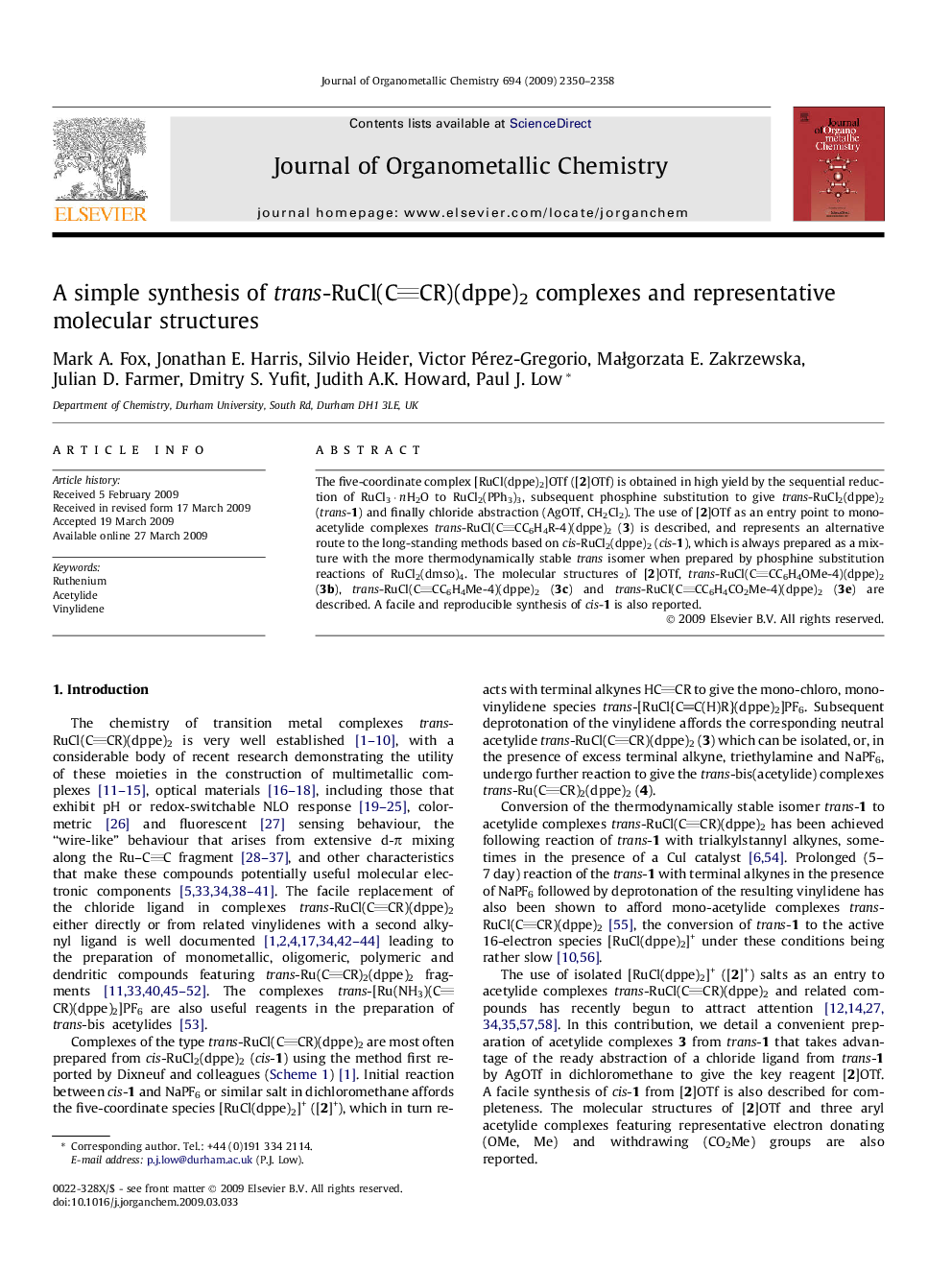| کد مقاله | کد نشریه | سال انتشار | مقاله انگلیسی | نسخه تمام متن |
|---|---|---|---|---|
| 1327497 | 977485 | 2009 | 9 صفحه PDF | دانلود رایگان |

The five-coordinate complex [RuCl(dppe)2]OTf ([2]OTf) is obtained in high yield by the sequential reduction of RuCl3 · nH2O to RuCl2(PPh3)3, subsequent phosphine substitution to give trans-RuCl2(dppe)2 (trans-1) and finally chloride abstraction (AgOTf, CH2Cl2). The use of [2]OTf as an entry point to mono-acetylide complexes trans-RuCl(CCC6H4R-4)(dppe)2 (3) is described, and represents an alternative route to the long-standing methods based on cis-RuCl2(dppe)2 (cis-1), which is always prepared as a mixture with the more thermodynamically stable trans isomer when prepared by phosphine substitution reactions of RuCl2(dmso)4. The molecular structures of [2]OTf, trans-RuCl(CCC6H4OMe-4)(dppe)2 (3b), trans-RuCl(CCC6H4Me-4)(dppe)2 (3c) and trans-RuCl(CCC6H4CO2Me-4)(dppe)2 (3e) are described. A facile and reproducible synthesis of cis-1 is also reported.
Details of the conversion of trans-RuCl2(dppe)2 to the acetylide complexes trans-RuCl(CCC6H4R-4)(dppe)2 (R = H, OMe, Me, C5H11, CO2Me, NO2) via the five-coordinate complex salt [RuCl(dppe)2]OTf are given, together with representative molecular structures.Figure optionsDownload as PowerPoint slide
Journal: Journal of Organometallic Chemistry - Volume 694, Issue 15, 1 July 2009, Pages 2350–2358